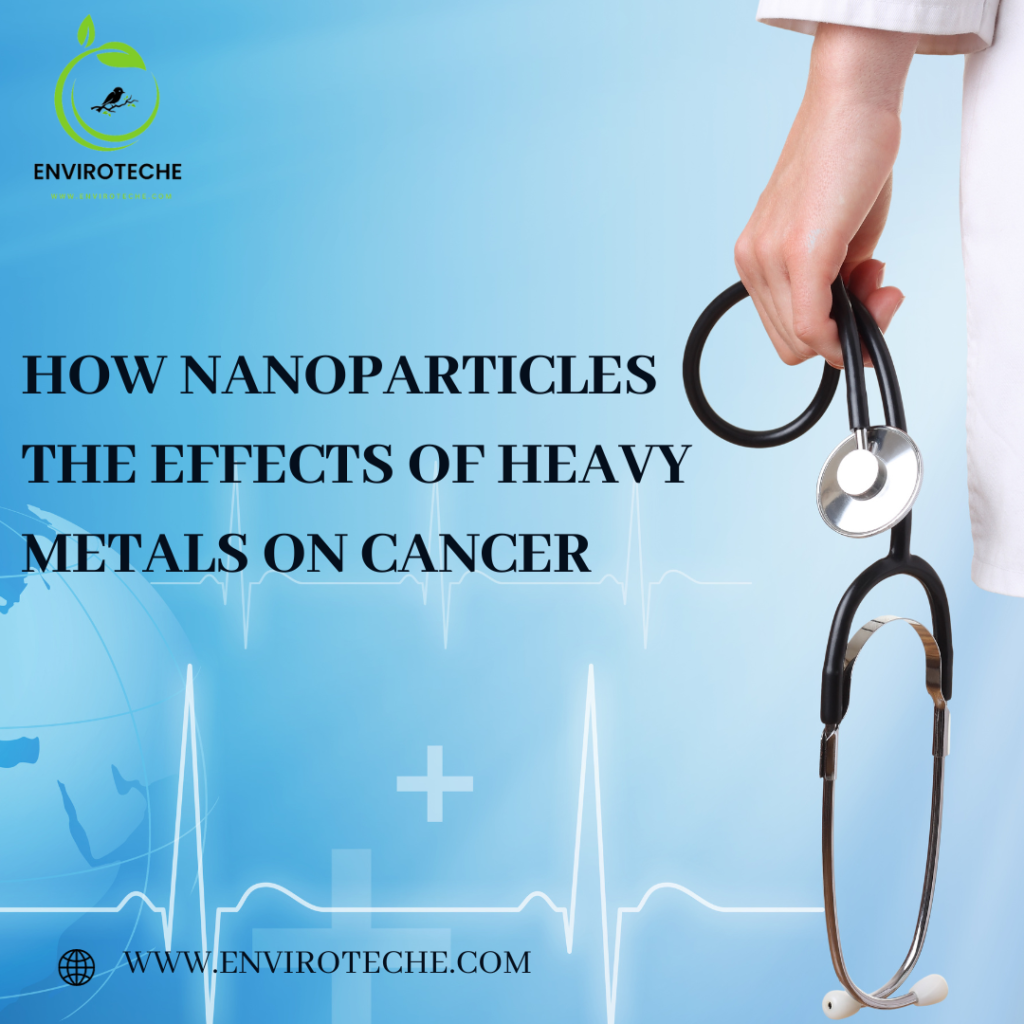Table of Contents

Heavy Metals and Nanoparticles
By offering creative and practical solutions, nanotechnology is significantly tackling a wide range of environmental issues. Due to their fast-rising quantities in agricultural soil, heavy metal (HM) contamination has attracted a lot of attention recently. Nanoparticles (NPs) have certain physiochemical characteristics that make them useful for treating stress.
The majority of our sources covering the last five years, we examine the state of the literature on nano-enabled agriculture that was repossessed from the Web of Science databases and published between January 2010 and November 2020. We briefly go through exposure concentrations, absorption and transport mechanisms, application techniques and their effects on plant growth and development. The current body of literature provided enough details about NPs behaviour in plants exposed to pollutants to suggest a mechanism for reducing HM stress.
Understanding Heavy Metals and Their Health Implications
The harmful effects of heavy metals are linked to several health risks and are now considered a severe threat. Metals have negative effects that are harmful to the human body and its steady functioning even if they have no biological role. Sometimes they perform the duties of a fake bodily part, and on rare occasions, they may even interfere with metabolic processes.
Only a few number of metals—like Al—can be detached by the body’s natural processes, but additional metals accumulate in the human body and food chain and develop chronic properties. Numerous public health strategies have been utilized to prevent, and cure metal poisoning, which can happen to varying degrees as a result of workplace being exposed, accidents, and environmental causes. Metal toxicity is influenced by the provided dose, the exposure method, and the duration of exposure (acute or chronic).
Nanoparticles: A Rising Concern
One of the most promising areas of inquiry in contemporary science is nanotechnology, which involves manipulating atoms and molecules at the nanoscale. Nanotechnology has made strides in the previous several years in the areas of medicine, the environment, therapies, drug discovery, and biotechnology. This is because nanomaterials have special characteristics (including chemical, mechanical, optical, magnetic, and biological ones) that make them ideal for use in industrial and medicinal settings.
Nanotechnology offers enormous promise for enhancing the treatment of numerous illnesses and in vitro diagnostics, taking into account both the theory and practice of employing nanoparticles. The toxicity of nanoparticles in connection to human health is not well understood, nevertheless. The health industry’s main concern is the toxic effects of nanoparticles on people. In contrast to bigger particles, nanomaterials can access cells, tissues, and organs by piercing biological membranes. Nanomaterials can enter the bloodstream by food or inhalation. Both genotoxicity and biochemical toxicity could result from this.
Enhanced Absorption and Accumulation
Due to their large surface area to volume ratio, nanoparticles are very reactive and can bind to heavy metal ions. Heavy metals become more soluble and bioavailable as a result of this interaction, which makes it easier for them to cross biological barriers.
For instance, research has demonstrated that nanoparticles like titanium dioxide (TiO2) and silica (SiO2) nanoparticles can help aquatic species like fish and algae absorb heavy metals. These metals can biomagnify once ingested and eventually reach human consumers by moving up the food chain. The risk of acquiring cancer and other harmful health impacts can considerably increase as a result of this heightened exposure to heavy metals.
Nanoparticles and Cellular Damage
When paired with heavy metals, nanoparticles can cause cellular harm in addition to their function as absorption aids. Reactive oxygen species (ROS) are known to be produced by heavy metals within cells, causing oxidative stress and DNA damage, which are crucial components in the development of cancer. When nanoparticles exist, they can stimulate the production of ROS and amplify the harm done by heavy metals.
A further source of worry is the possibility that nanoparticles themselves are harmful. Certain nanoparticles have the ability to alter biological processes, cause inflammation, and cause DNA alterations. These negative consequences may work in concert with heavy metal exposure to help cause cancer.
Nanoparticles in Food and Consumer Products
Concerns about increased heavy metal toxicity have been raised by the extensive usage of nanoparticles in consumer products and food. The release of heavy metals from cosmetics, additives to food, and packaging materials may be hindered by the common presence of nanoparticles in these products.
For instance, nanoparticles in food packaging may interact with heavy metals like lead or cadmium and leach into food products. An individual’s intake of heavy metals might increase as a result of prolonged exposure to such contaminated foods, raising the risk of cancer-causing effects.
Regulatory Gaps and the Need for Research
The regulatory framework surrounding nanoparticles as well as how they communicate with heavy metals is currently poorly understood. In the majority of countries, there are not many detailed regulations or standards governing the use and labelling of nanoparticles in consumer products. Customers thus bear the risk of unintentionally being in contact with nanoparticles and a higher risk of heavy metal toxicity.
More studies on the causes and consequences of interactions between nanoparticles and heavy metals are urgently required to solve this issue. Governments, regulatory agencies, and the scientific community will need to work together to establish laws for the safe use of nanoparticles in consumer goods, with a focus on lowering their potential to increase heavy metal toxicity.
Conclusion
Heavy metals are linked to serious health risks, including the potential to cause cancer. Nanoparticles can raise these risks due to higher absorption, buildup, and cellular damage. As the usage of nanoparticles in consumer products rises, research and regulatory oversight are becoming more and more crucial in order to lower the risk of rising heavy metal toxicity. The well-being and health of both individuals and the environment are necessary for us to understand and successfully combat this growing threat.
Ghulam Abbas1, Saima Saman2
1Department of Zoology, Government College University, Faisalabad
2Department of Zoology, Islamia College Peshawar
Check Other Scholarships:

